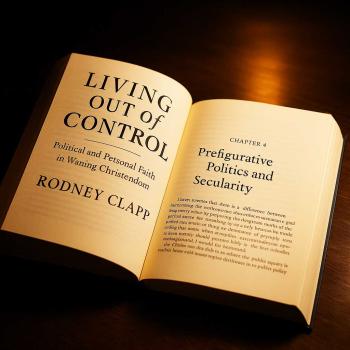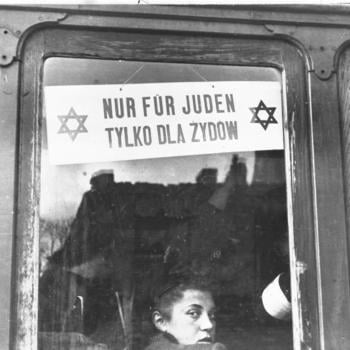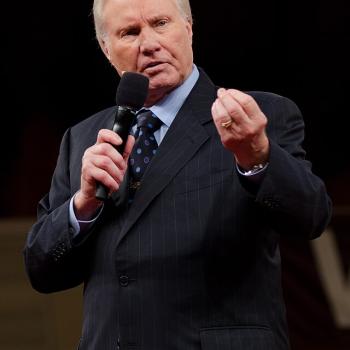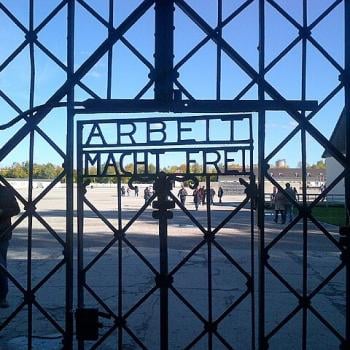The Now Old “Young Evangelicals”
*Note to would-be commenters: Please keep comments/questions brief and to the point. Do not include links or pictures. Do not express opinions here that arise out of absolutely contrary worldviews; this is a blog for the expression of my opinions and discussion with other evangelicals (broadly defined) and to explain evangelical Christianity to those who are genuinely interested in learning about it. It is also about Arminianism, a “flavor” of evangelical Christianity. I will not post comments that are argumentative or hostile; the “mood” of this blog is dialogical, not argumentative.*
I grew up in a form of American evangelicalism that was heavily influenced by fundamentalism, even though we did not identify as “fundamentalist” because, to us, Pentecostals, that meant conservative evangelicals, like us, but different from us in rejecting the supernatural gifts of the Holy Spirit. To us, all fundamentalists were cessationists. However, we read fundamentalist literature anyway. In college, most of our textbooks were written by fundamentalists. We Pentecostals didn’t have a lot of literature of our own.
When I entered a moderate, evangelical Baptist seminary, right out of college, something I was not supposed to do (according to my Pentecostal mentors, family and friends), I encountered a new world of evangelicalism. I don’t remember who, if anyone, introduced me to it. Probably I discovered it on my own by browsing the periodical section of the seminary library. Among the periodicals I found and devoured: The Post-American (1971-1979) which turned into Sojourners (1975–). (I don’t have an explanation for the apparent conflict of dates; I got them from the Sojourners web site.) Also: The Other Side (started in 1965 as Freedom Now and is now online only). Also: Agora (I have no dates for its publication but it was a short-lived quarterly magazine of theological opinion written, edited and published by progressive Pentecostal scholars). Also: The Reformed Journal (1951-1990) which is described as “top-notch, venturesome, theological reflection on a broad range of issues.” (I have found an online form of this journal with a publication as recent as 2018.)
In 1974, just as I was entering seminary, theological journalist Richard Quebedeaux published The Young Evangelicals: Revolution in Orthodoxy (HarperCollins). Quebedeaux’s book summed up the “mood” of the young evangelicals who wrote for the publications mentioned above—and others.
I saw myself in Quebedeaux’s portrait of “young evangelicals” even though I was just beginning to think for myself and grow out of fundamentalism.
So, all that is to say, in the 1970s, my formative years for becoming a “progressive evangelical” (which is not the same as a “progressive Christian” but that distinction is for another blog post), these magazines and books like Quebedeaux’s liberated me from fundamentalist, right-wing, conservative evangelicalism but not from Christian orthodoxy or even from the evangelical ethos which I have described here so often and in so much detail (also in some of my books).
Many books contributed to my liberation from fundamentalism and right-wing, conservative evangelicalism of the type represented by Carl F. H. Henry and his friends (e.g., Kenneth Kantzer, et al.). Authors such as Jack Rogers, Bernard Ramm, Donald G. Bloesch, Clark Pinnock, Donald Dayton—all moved me away from fundamentalism and conservative evangelicalism and toward whatever I am today.
I remember that my main theological mentors in seminary steered me away from Carl Henry and his type of conservative evangelicalism (rationalistic, traditionalist, barely distinguishable from fundamentalist—“fundamentalism with manners”) toward Karl Barth and Emil Brunner. (Later, the seminary reverted more toward the Carl Henry style of evangelical thought under pressure from constituents.)
For whatever reasons, I decided that the style of being evangelical of these “young evangelicals” (Ron Sider, Don Dayton, John Alexander, Jim Wallis, et al.) was for me; it “fit” me and I “fit” it. I put it on and never took it off.
What were the “features” of these 1970s (and beyond) “young evangelicals?”
The movement (or mood) began at Trinity Evangelical Divinity School among students who were against the Vietnam War. They were also against even the disguised racism they believed was prevalent among American white evangelicals; they supported Martin Luther King and the Civil Rights Movement. (Yes, MLK was dead by the 1970s but these young evangelicals supported his movement and his legacy and wanted both to become part of the American evangelical movement.) They leaned toward the Anabaptist style of Christianity (although some became Episcopalians under the influence of Wheaton College professor Robert Webber who wrote The Younger Evangelicals in 2002). They were opposed to the general conservative evangelical support of Nixon and the coming (and then happening) “Reagan Revolution.” They favored the social gospel without sacrificing orthodoxy. They founded organizations like Evangelicals for Social Action (ESA). They saw positive elements in the budding feminist movement and applauded the founding of The Evangelical Feminist Caucus (which led the founding of Christians for Biblical Equality).
Throughout the 1970s and into the 1980s these “young evangelicals” were progressives within orthodox, evangelical Christianity. As they became progressive, they did not shed their orthodoxy. Later, perhaps, some did. But not during the 1970s and early 1980s. Theologically, they were not especially interested in rationalistic apologetics or debates about biblical inerrancy or the Calvinist/Arminian controversy, or eschatological debates about the “end times.” They were more interested in practical Christianity that works to bring the world, beginning with America, closer to the Jesus-vision of the Kingdom of God.
Sometime in the 1980s, as I recall (I don’t have the particulars here with me), Carl Henry, then editor or post-editorial commentator of Christianity Today, published a scathing critique of the “young evangelicals.” It was harsh; it was scathing; it was off base. As he aged, Henry became increasingly conservative. When I met him in the 1990s he was no longer the Henry of the 1940s when he dared to prophetically critique fundamentalism.
But the power and influence of the “young evangelicals” began to decrease in the later 1980s and throughout the 1990s so that it is hardly remembered anymore. There have been a couple books published (which I have reviewed here) about that movement—looking back at it. Now, when people talk about “evangelicalism” they are most definitely NOT including those of us who identified with that young evangelical mood in the 1970s and beyond.
What I sometimes wonder is—who is left of that young evangelical movement? Am I alone? Are there even ten of us left—who dare to call ourselves evangelical?













